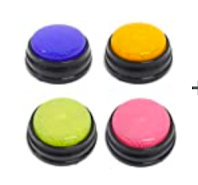As a mother of 5 children, two which had been diagnosed with Autism/P.D.D (Pervasive Development Disorder), I had spent months researching what the diagnosis of Autism even meant. I wanted to know how to treat it, what to do while waiting for an actual diagnoses and how to get my children the best therapy that I could find. At the same time I was on the 'hunt' to figure things out, I also had to deal with the emotional rollercoaster I felt I was on. Truthfully, rollercoasters were always that ride that I would go on, sometimes wishing I could change my mind half way through that upward hill, but knowing that once I got to the top, I could just scream and make those fears disappear as quickly as they came. My journey at times has felt like I am back on that rollercoaster. Screaming at times because it seems so frustrating at times but always getting back on knowing that I will make it through it!
I am not a doctor or psychologist. I like you, am a parent of a child with autism. If you are not a parent but are reading this, maybe you have a sibling, cousin or friend with Autism. Regardless of the reason, you are now reading this and hopefully my story will enlighten you and give you the strength to know that you are not alone.
Prior to having children, I was a Registered Nurse working in different hospitals and eventually in a High School where I took a job working in a Classroom with Developmentally Challenged Students. I loved my job and was always eager to learn about these amazing children that I had the pleasure of working with.
All of the information that I write about is a part of my journey. The story of what it was like (and continues to be like) in understanding and coping with having a child with Autism. Hopefully some of the information I will share with you, will make your journey a little easier. The most important thing to take out of this will be to know that you are not alone!
Keep reading to learn more about Autism.....







